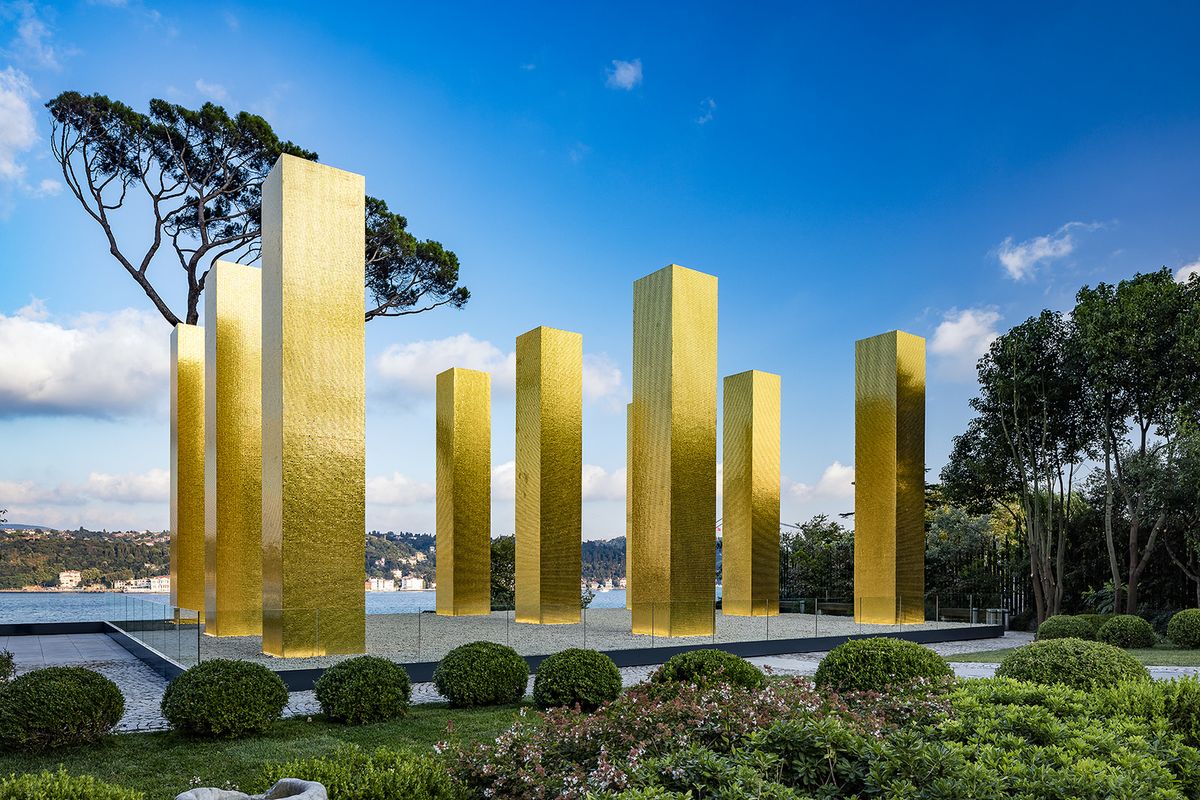In the wake of World War II’s devastation, the late 1950s in Germany saw the emergence of a new artistic renewal known as the Zero Movement. Initiated by artists Heinz Mack and Otto Piene, with Günther Uecker joining later, this movement in Düsseldorf aimed to start a new era of art free from traditions and the past. They sought to begin aesthetically and idealistically at point ground “zero,” promoting an optimistic and idealistic attitude to drive change towards a new aesthetic sensitization.
ZERO propagated a minimalist aesthetic, aligning itself with monochrome artworks. The group combined sound, light, and kinetic elements with spatial designs and colour schemes, experimenting with painting, installations, performances, and movements. This innovative approach sought to redefine the boundaries of art and create a sensory experience that was both immersive and transformative, deliberately departing from traditional static art forms to explore new frontiers.
ZERO artists were pioneers in using unconventional materials such as metal, mirrors, nails, and various industrial substances. Heinz Mack, in particular, became renowned for his light sculptures and kinetic pieces that played with reflections and shadows. He employed natural elements such as light, fire, air, water, and sand as integral creative means of expression in his artworks. By incorporating kinetic principles and new industrial materials such as aluminium, acrylic glass, Fresnel lenses, and chemical substances like phosphorus and mercury, Mack revolutionized the concept of sculpture. His open works actively engaged the surrounding space and involved viewers directly as they interacted with light in unique ways that expanded perception.
Otto Piene was a choreographer of light, compelling it to ‘dance’ across the room, initially by hand and later through sophisticated mechanical arrangements. He explored light and fire, creating the mesmerizing “Light Ballet,” which used light as a medium to convey movement and emotion. Piene was also a pioneer in the fusion of art and technology. In the 1960s, he began incorporating computers and lasers into his artwork, developing a unique form of light art.
Günther Uecker introduced the world to his distinctive nail art, embedding nails into various surfaces to create textured and dynamic works. A hallmark of the ZERO movement was its minimalist and monochromatic aesthetic. The artists believed that simplicity and purity could evoke profound emotional responses. This approach, evident in works exhibited at venues like the Stedelijk Museum in Amsterdam, was intended to foster a sense of calm and contemplation, serving as a counterbalance to the chaos and destruction experienced during the war. The monochrome palette often limited to shades of white, black, and metallic, emphasized form and light rather than colour.
Collaboration was central to the Zero Movement. The founders frequently worked together on projects and exhibitions, creating a cohesive and unified vision. This spirit of cooperation extended beyond Germany’s borders, inviting international artists to participate and contribute, thus fostering a global dialogue. This internationalism was crucial in spreading the movement’s influence and ideas across the world.
The impact of the Zero Movement is profound and enduring. Major art institutions, including the Guggenheim Museum in New York, have celebrated the movement with significant retrospectives, highlighting its pivotal role in the evolution of modern art.


